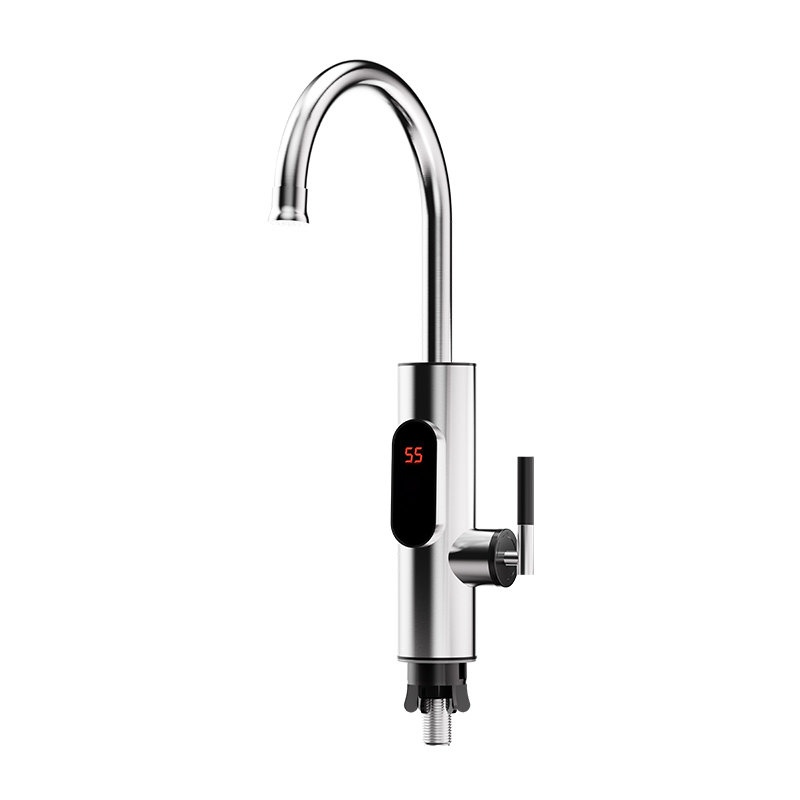Electric Faucets: The Future of Efficient, Convenient Water Control
2025-06-18
When we think of faucets, we typically imagine a simple mechanism to control water flow — twist to the left for hot, to the right for cold. However, with advancements in technology, faucets have evolved beyond the conventional. Enter the electric faucet: a modern solution to providing efficient, consistent, and sometimes even instant hot water.
But what exactly is an electric faucet, and how does it work? Let's dive into the world of electric faucets and explore why they're becoming an increasingly popular choice in kitchens, bathrooms, and beyond.
What Is an Electric Faucet?
An electric faucet is a smart faucet designed to provide a steady flow of hot or cold water without the need for a traditional water heater. This faucet is powered by electricity and typically comes with an integrated heating element, which allows it to instantly heat water as it flows through the faucet.
Electric faucets come in a variety of styles, from simple, sleek designs to high-tech models with digital displays and touchless operation. They are often equipped with features that enhance convenience, such as temperature controls, water-saving settings, and touchless activation.
How Does an Electric Faucet Work?
The primary function of an electric faucet is to heat water on demand. Here's how it works:
1. Power Supply: The faucet is powered by electricity, either through a direct connection to the home's electrical system or by a plug-in adapter.
2. Heating Element: When you turn on the faucet, water flows through a heating element housed within the faucet body. This element heats the water almost instantly, ensuring you get hot water right when you need it.
3. Temperature Control: Many electric faucets come with built-in temperature controls, either through a manual dial or digital settings, allowing you to adjust the temperature to your liking.
4. Energy Efficiency: Since electric faucets heat water on-demand, they are more energy-efficient than traditional water heaters, which constantly maintain a reservoir of hot water. With an electric faucet, you only use energy when you need hot water.

Benefits of Using an Electric Faucet
1. Instant Hot Water
One of the most obvious advantages of electric faucets is the ability to get hot water instantly. No more waiting for your water heater to warm up — just turn on the faucet, and the water will be heated as it flows.
2. Energy Efficiency
Electric faucets can help reduce energy consumption. Traditional water heaters keep a large tank of water hot at all times, wasting energy even when hot water isn't needed. In contrast, electric faucets heat water only when you turn them on, making them far more energy-efficient.
3. Compact and Space-Saving
Electric faucets are much more compact than traditional water heaters. They don’t require a bulky tank or separate installation process, which makes them ideal for small spaces or modern homes that favor minimalist design.
4. Cost Savings
Because electric faucets only heat water when it's needed, they can help lower your monthly energy bills. Additionally, the reduced need for a traditional water heater may lower maintenance and replacement costs over time.
5. Convenience and Control
Many electric faucets are equipped with smart features, such as touchless operation and digital displays to show the current water temperature. This allows for hands-free operation and precise control, improving the overall user experience.
6. Reduced Environmental Impact
By minimizing energy waste and the need for constantly heated water, electric faucets contribute to a more sustainable lifestyle. They also reduce the carbon footprint associated with traditional water heating systems.
Applications of Electric Faucets
Electric faucets can be used in various settings, both residential and commercial. Some common applications include:
Kitchens
Ideal for homes with limited space, electric faucets can provide hot water for cooking, cleaning, and dishwashing without the need for a bulky water heater.
Bathrooms
Electric faucets in bathrooms provide instant hot water for handwashing or shaving, ensuring comfort and convenience, especially in colder months.
Off-Grid Living
For homes in remote areas without access to conventional hot water systems, electric faucets can offer an efficient solution for on-demand hot water.
Commercial Spaces
Electric faucets are perfect for use in public restrooms, cafes, and restaurants where convenience, hygiene, and water efficiency are essential.
Things to Consider Before Installing an Electric Faucet
Before making the switch to an electric faucet, here are a few things to keep in mind:
1. Electricity Supply
Ensure your home or business has access to a reliable power source to support the faucet. Some models may need a direct connection to the electrical system, while others may come with a plug-in adapter.
2. Water Flow Rate
Consider the flow rate of the faucet. Some models may not be able to provide as much hot water at a time as others, so it's important to choose a faucet that meets your needs, especially if you require hot water for tasks like filling large pots in the kitchen.
3. Installation
Installation can vary depending on the model and whether it needs a hardwired connection or just a plug-in. Be sure to consult a professional if you're unsure about the installation process.
4. Maintenance
Although electric faucets are generally low-maintenance, regular cleaning and maintenance are important to keep them running efficiently. Follow the manufacturer's guidelines for proper care.
Conclusion: Why Choose an Electric Faucet?
Electric faucets are the future of water heating. They offer instant hot water, energy savings, and compact design, making them an attractive option for both homeowners and businesses. Whether you're looking to upgrade your kitchen, bathroom, or need an efficient solution for a remote location, electric faucets provide convenience, control, and efficiency at your fingertips.
So, if you're tired of waiting for hot water or looking for an eco-friendly, energy-efficient alternative, an electric faucet might just be the upgrade you’ve been searching for.


